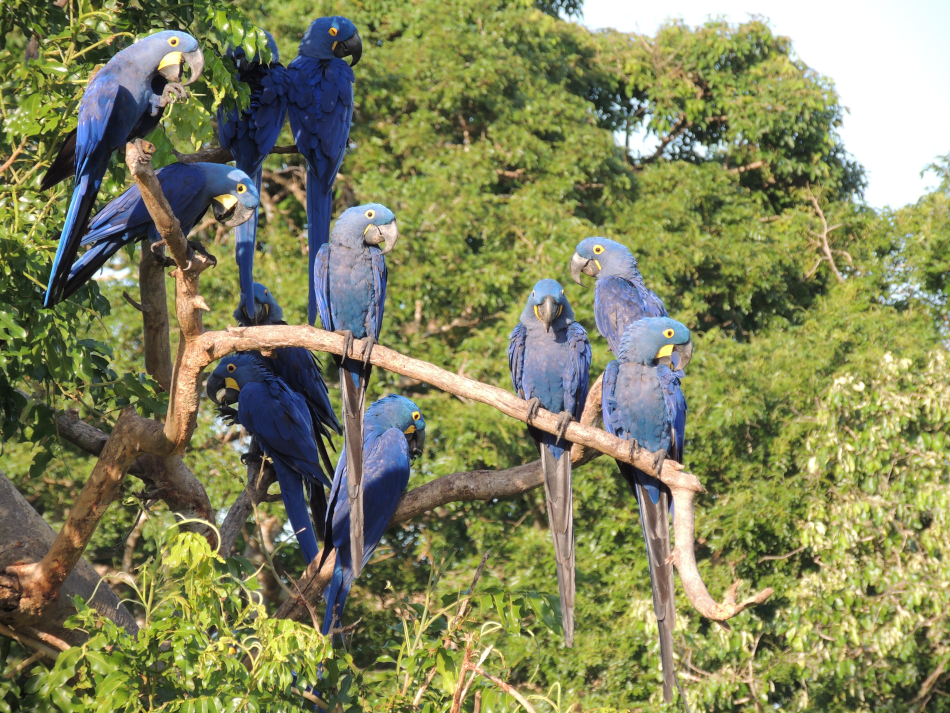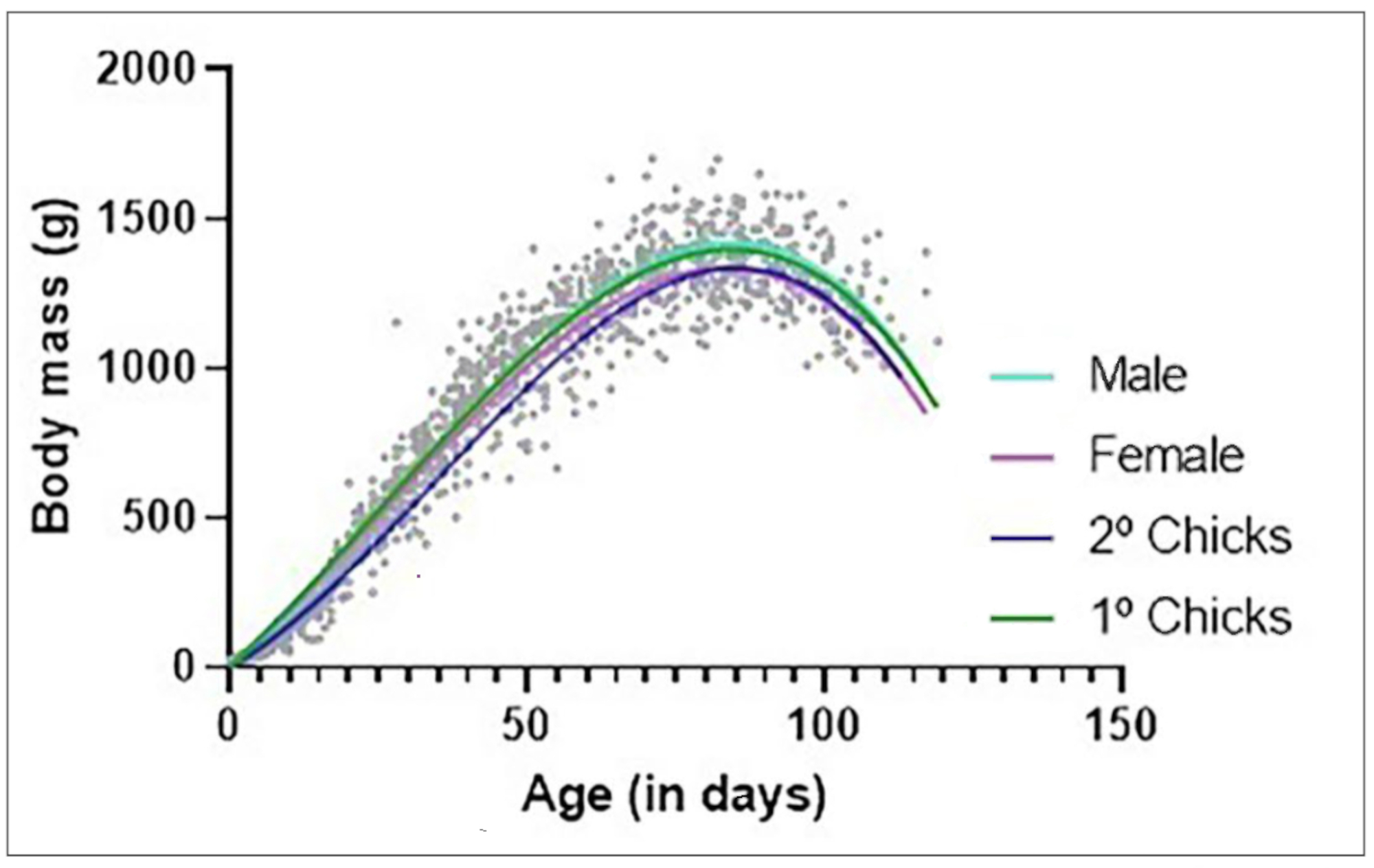In the vast Pantanal wetlands of west-central Brazil, Hyacinth Macaws substantially smaller than the typical size have been hiding in plain sight. A new species has not been discovered, but rather these are downsized versions of the same species, termed 'dwarf' Hyacinth Macaws by researchers.

'Downsized' Hyacinth Macaws have been lurking unnoticed until extensive data analysis by researchers (Fernanda Fontoura / Instituto Arara-Azul).
Dr Neiva Guedes and her team of biologists of the Instituto Arara-Azul (Blue Macaw Institute) made the discovery by means of an exhaustive analysis of an enormous amount of data. Founded by Neiva, the Instituto Arara-Azul is a Brazilian NGO which has dedicated decades to the conservation of the vulnerable Hyacinth Macaw, and over a period of 30 years has collected data on the biology of this species, including meticulous measurements of growing chicks. The Loro Parque Fundación has provided support to the Instituto Arara-Azul to help its important work.
As Neiva and her colleagues note, intraspecific variation may become discernible only following long-term, systematic observations of little-known patterns and processes. Various factors are known to affect directly the growth rate of psittacines, including environmental aspects such as temperature and precipitation, food quality and availability, differences between the sexes, hatching-rank, clutch size, diseases, and ectoparasite infestations. And so it is that dwarf individuals were identified from the accumulated mass of data collected on various growth measures of chicks, namely body mass, total length and tail length. The main purpose of the analysis was to determine a growth model of Hyacinth Macaw chicks in 473 natural nests and 415 artificial nests installed in the natural habitat in the Pantanal biome and, in the last 15 years, also in the Cerrado biome.

Measuring the tail of a young Hyacinth Macaw (Dr Neiva Guedes / Instituto Arara-Azul).
During this 30-year period, the speed of growth and body mass of chicks varied widely, and four different growth models were tested against the real data to see which were the best fit. The best fitting growth curves for body mass, total length, and tail length corresponded respectively to the so-called cubic polynomial, Richards and Gompertz models. From an average egg weight of 33.3 g, length of 47.3 mm and width 36.6 mm respectively, the average individual nestling weight was 23 g at day one, 212.8 g at day 15, 612.1 g at day 30, 1,188.7 at day 60 and 1,362.8 g at 90 days.
Chick development had three phases. First is the nestling stage, covering the first 25 days, when chicks were completely dependent on the parents for maintaining body temperature, and weight gain was slow. This is followed by the chick stage, covering 26-77 days, in which the weight gain was fast until maximum weight was reached. Finally, the young are considered juvenile between 78 and 107 days old. During this phase, weight was maintained up to 90-95 days, followed by weight loss coinciding with the first attempts at flying and until permanently leaving the nest. When chicks left the nest after an average of 104 days (latest 107 days), the average weight was 1,177.5 g, with the maximum weight 1,550 g. When leaving the nest, the average total length was 677.3 mm.

Chicks at four points in their development, showing the size difference between a 'dwarf' bird and a typical individual: A) nestlings; B) chicks at 44 and 45 days old; C) chicks at 61 and 62 days old; D) juveniles at 104 and 105 days old (Dr Neiva Guedes / Instituto Arara-Azul).
A comparison between typical-sized first and second-hatched chicks revealed that weight gain was slower for the second chick and 42% faster for the first chick during the linear phase (straight line part of the growth curve). Total growth between males and females not was statistically different, confirming the paucity of sexual dimorphism in total length. However, tail size differed, being 24% greater in males than in females.
Observations and analysis detected 15 individuals leaving the nest at a maximum of 126 days (average 108 days) with a maximum weight of 1,000 g (average of 938 g). In addition to fledging at a lower weight, the gain in weight of these dwarf individuals was lower and slower compared to normal-sized individuals. They reached maximum weight only when they were ready to abandon the nest, without any weight loss prior to nest departure. Overall, the dwarf individuals had a body mass, total length, and tail length respectively 20%, 22%, and 70% smaller than in the overall population. What is more, the dwarfs remain small in size after fledging and are easily identified as adults.

Graph showing gain in body mass (Dr Neiva Guedes/Instituto Arara-Azul).
Reference
Guedes, N M R, Toledo, M C B, Fontoura, F M, da Silva, G F, & Donatelli, R J. 2022. Growth model analysis of wild Hyacinth Macaw (Anodorhynchus hyacinthinus) nestlings based on long-term monitoring in the Brazilian Pantanal. Scientific Reports, 12(1), 15382. DOI: https://doi.org/10.1038/s41598-022-19677-5

